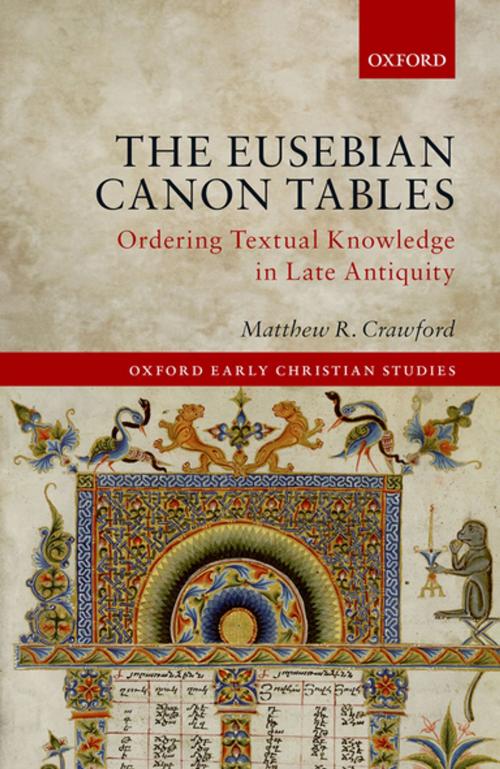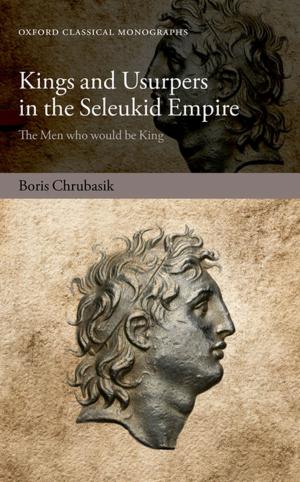The Eusebian Canon Tables
Ordering Textual Knowledge in Late Antiquity
Nonfiction, Religion & Spirituality, Bible & Bible Studies, New Testament, Commentaries| Author: | Matthew R. Crawford | ISBN: | 9780192523587 |
| Publisher: | OUP Oxford | Publication: | May 6, 2019 |
| Imprint: | OUP Oxford | Language: | English |
| Author: | Matthew R. Crawford |
| ISBN: | 9780192523587 |
| Publisher: | OUP Oxford |
| Publication: | May 6, 2019 |
| Imprint: | OUP Oxford |
| Language: | English |
One of the books most central to late-antique religious life was the four-gospel codex, containing the Gospels of Matthew, Mark, Luke, and John. A common feature in such manuscripts was a marginal cross-referencing system known as the Canon Tables. This reading aid was invented in the early fourth century by Eusebius of Caesarea and represented a milestone achievement both in the history of the book and in the scholarly study of the fourfold gospel. In this work, Matthew R. Crawford provides the first book-length treatment of the origins and use of the Canon Tables apparatus in any language. Part one begins by defining the Canon Tables as a paratextual device that orders the textual content of the fourfold gospel. It then considers the relation of the system to the prior work of Ammonius of Alexandria and the hermeneutical implications of reading a four-gospel codex equipped with the marginal apparatus. Part two transitions to the reception of the paratext in subsequent centuries by highlighting four case studies from different cultural and theological traditions, from Augustine of Hippo, who used the Canon Tables to develop the first ever theory of gospel composition, to a Syriac translator in the fifth century, to later monastic scholars in Ireland between the seventh and ninth centuries. Finally, from the eighth century onwards, Armenian commentators used the artistic adornment of the Canon Tables as a basis for contemplative meditation. These four case studies represent four different modes of using the Canon Tables as a paratext and illustrate the potential inherent in the Eusebian apparatus for engaging with the fourfold gospel in a variety of ways, from the philological to the theological to the visual.
One of the books most central to late-antique religious life was the four-gospel codex, containing the Gospels of Matthew, Mark, Luke, and John. A common feature in such manuscripts was a marginal cross-referencing system known as the Canon Tables. This reading aid was invented in the early fourth century by Eusebius of Caesarea and represented a milestone achievement both in the history of the book and in the scholarly study of the fourfold gospel. In this work, Matthew R. Crawford provides the first book-length treatment of the origins and use of the Canon Tables apparatus in any language. Part one begins by defining the Canon Tables as a paratextual device that orders the textual content of the fourfold gospel. It then considers the relation of the system to the prior work of Ammonius of Alexandria and the hermeneutical implications of reading a four-gospel codex equipped with the marginal apparatus. Part two transitions to the reception of the paratext in subsequent centuries by highlighting four case studies from different cultural and theological traditions, from Augustine of Hippo, who used the Canon Tables to develop the first ever theory of gospel composition, to a Syriac translator in the fifth century, to later monastic scholars in Ireland between the seventh and ninth centuries. Finally, from the eighth century onwards, Armenian commentators used the artistic adornment of the Canon Tables as a basis for contemplative meditation. These four case studies represent four different modes of using the Canon Tables as a paratext and illustrate the potential inherent in the Eusebian apparatus for engaging with the fourfold gospel in a variety of ways, from the philological to the theological to the visual.















